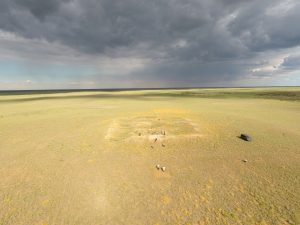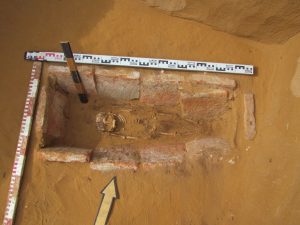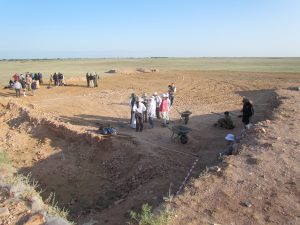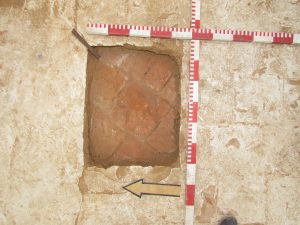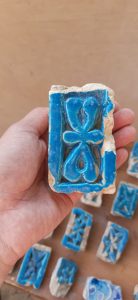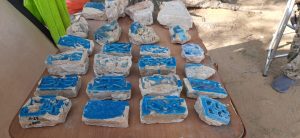Archaeological studies of the mausoleum complex of the XIV century nearby the village of Lapas in Astrakhan region
In the field season of 2023, the Institute of Archaeology named after A. Kh. Khalikov of the Tatarstan Academy of Sciences organized an archaeological expedition to study the mausoleum complex near the village of Lapas in the Kharabali district of the Astrakhan region, which began in 2018. The studies are carried out as a part of the State Program of the Republic of Tatarstan “Preservation of the national identity of the Tatar people”. The research supervisor of the project is Academician of the Tatarstan Academy of Sciences, Doctor of History Ayrat G. Sitdikov.
Specialists of the Institute of Archaeology named after A.H. Khalikov of the Tatarstan Academy of Sciences, students and employees of the Institute of International Relations, Institute of Physics, Institute of Management, Economics and Finance KFU, as well as students and staff of the Institute of Regional Development of the Penza region and pupils of secondary school No. 10 in Penza took part in the work of the expedition.
The complex of mausoleums has been known for a long time, there are mentions of it in travel notes of travelers and diplomats since the XVIII century, where mausoleums appear as “royal burials”. It is assumed that they belong to the khans of the Golden Horde and their retinue.
In the 2023 field season, the study of the largest mausoleum, dating back to the first half of the XIV century, the time of Uzbek khan’s reign, was continued. It was during his khanate in the Golden Horde that Islam was proclaimed the state religion.
During the excavations, numerous fragments of architectural decoration in various techniques were discovered. An important finding, confirming, that the excavated
object is a domed structure, was the discovery of a fragment of a structural element – a squinch. In the inner part of the mausoleum a fragment of a brick floor was found, which was covered with a thin layer of alabaster mortar. The base where one of the columns supporting the vault of the building stood was also revealed. On the territory of the courtyard to the west of the mausoleum the burials by the Muslim burial rite were discovered. The results obtained allow us to speak about the originality of the studied object.

